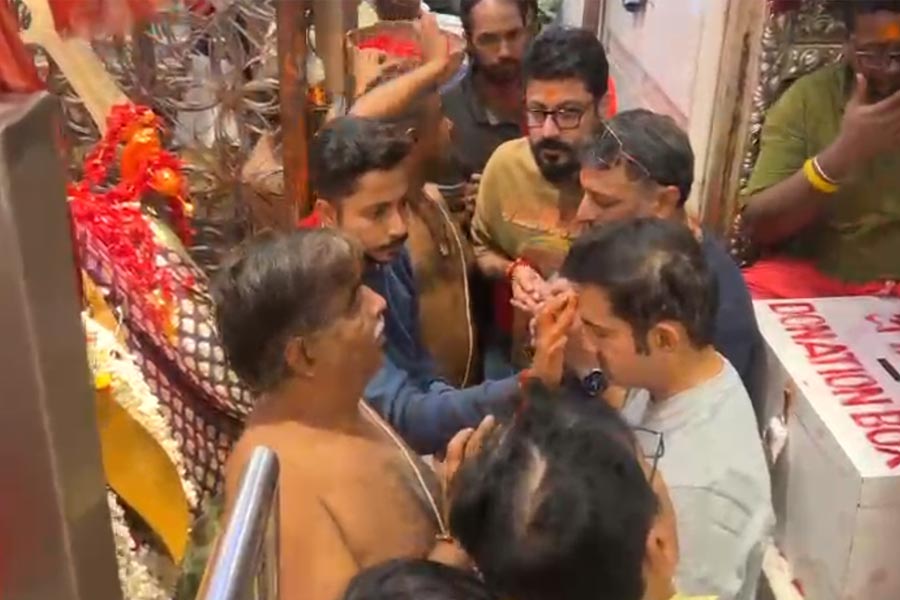The National Monuments Authority (NMA) has released draft heritage bye-laws for three more Centrally protected monuments and sites in Bihar for their conservation and periphery development, an official said on Wednesday.
The three centrally protected sites and monuments are 'Vapiyaka cave' and 'Vada Thika cave' (Nagarjuni hill, Jehanabad), 'Buddhist Stupa' (Kesariya, East Champaran) and 'excavated remains of the stupa on 18 plots in two villages Harpur Basant and Chakramdas' (Vaishali).
The three ancient sites are being protected by the Archaeological Survey of India (ASI).
The NMA has invited suggestions and objections on the draft bye-laws of three protected monuments from the general public in writing. After that final bye-laws will be prepared, Goutami Bhattacharya, Superintending Archaeologist of ASI, Patna Circle told PTI .
"The protected sites in Jehanabad district are found in the Barabar and Nagarjuni hills. In the Nagarjuni range, there are three excavated caves, containing the inscriptions of Asoka's grandson Dasaratha ( 214 BC). Three caves in the Nagarjuni hills are Gopi cave, Veda thika cave, and Vapiyaka cave. These are the oldest surviving rock-cut caves in India, dating from the Mauryan Empire, during the reign of Ashoka and his grandson Dasaratha. During this period, caves were generally used as viharas (living quarters) by the Jain and Buddhist monks", says the draft bye-laws.
The draft heritage bye-laws have been released under section 20 (E) of the Ancient Monuments and Archaeological Sites and Remains (AMASR) Act, 1958 on the basis of a field survey conducted by the ASI (Patna circle).
The NMA, which comes under the Union Ministry of Culture, has been assigned several functions including the protection and preservation of monuments and sites through management of the prohibited and regulated area around the Centrally protected monuments. It is also the responsibility of the NMA to consider grant of permissions to applicants for construction-related activity in the prohibited and regulated area.
"Kesaria is situated in the East Champaran district, on the eastern bank of the Gandak river. The place houses the world's tallest Buddhist Stupa ever excavated. The chronology of the site ranges from the Sunga-Kushana period to the late Gupta period. General Cunningham was of the opinion that it dates back to AD 200 to 700, and that it was built upon the ruins of a much older and larger stupa. This ancient monument is known to the people as the deora of Raja Ben, who is said to have been one of the five supreme Emperors of India and is therefore called Raja Ben Chakravarti", says the draft bye-laws for Buddhist Stupa (Kesariya, East Champaran).
Heritage bye-laws are a welcome step forward in heritage management as they aim to bridge the gap between managing the ambient environment near a protected site and monument and the requirements of the populace inhabiting the immediate vicinity of such sites and monuments.
It is hoped that with site-specific bye laws common people as well as administrative and local stakeholders would find it easy to meet their construction, repair and other development-related issues in the immediate vicinity of protected sites and monuments, Bhattacharya said.
With increased urbanisation, development, growth and increasing population pressure, there is growing pressure on land including the land around centrally protected monuments, she said, adding "As this often affects the monument and site adversely, it is important that such growth around the centrally protected monuments is properly regulated, balancing the needs of individuals and growth and development on the one hand and the requirements of preservation and protection of these monuments on the other".
As per the draft bye-laws for excavated remains of stupa in Vaishali is concerned, the "Excavated remains of stupa on 18 plots are in village Harpur Basant and Chakramdas in Vaishali district".
It said that "the date of construction of the monument is ascribed to 5th Century BC to 2nd Century AD. Lichhavis, Mauryan, and Kushana rulers have all contributed towards the construction and development of this monument. This is one among the eight relic stupa built over the corporeal remains of Buddha. The remains were distributed among eight claimants, one being the Lichhavis of Vaishali. The excavation has yielded a number of antiquities among which the relic casket containing ashes mixed with earth, a punch marked coin, some beads and gold objects are the most remarkable discovery".
Except for the headline, this story has not been edited by The Telegraph Online staff and has been published from a syndicated feed.











